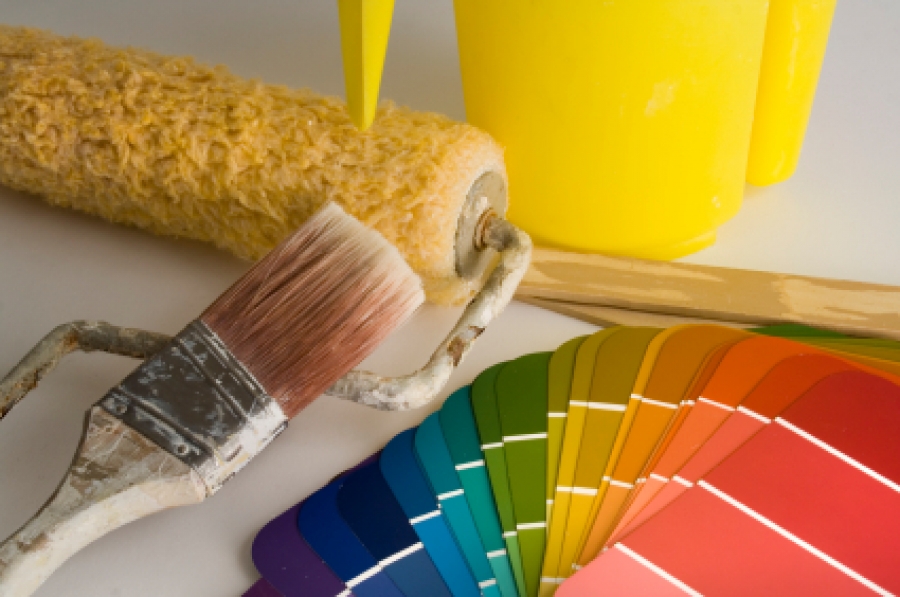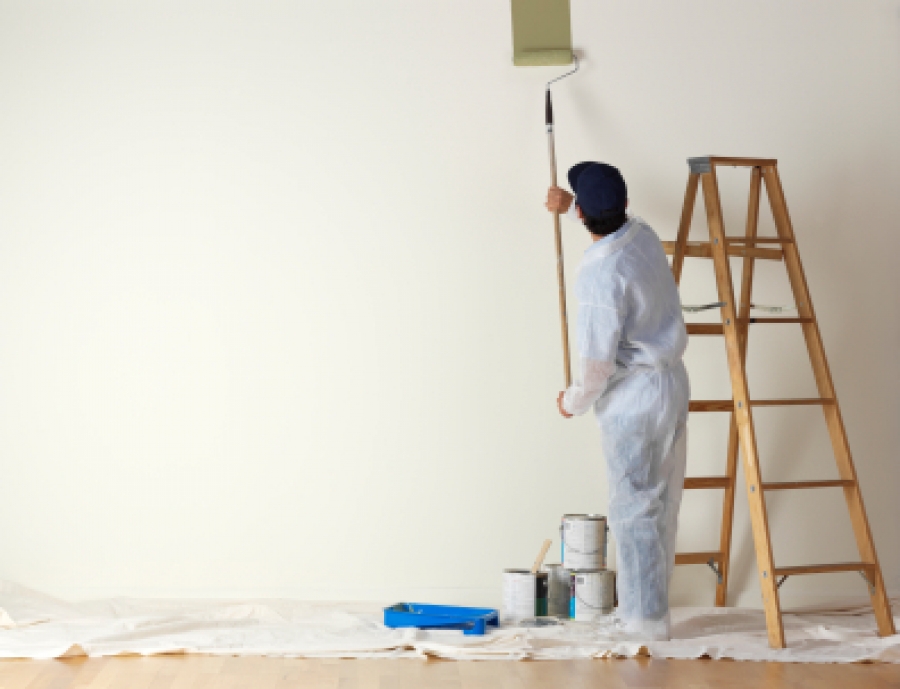Painting: Tools of the Trade
As the old saw goes, the proper tools make the job; this applies to painting as well. Purchase quality tools and materials. DIYers save on labor costs and can easily justify paying the price of quality tools. Tool quality and price vary widely, but you can find good quality at a medium price. The right tools will help you to achieve your goals of increased quality and decreased work time.
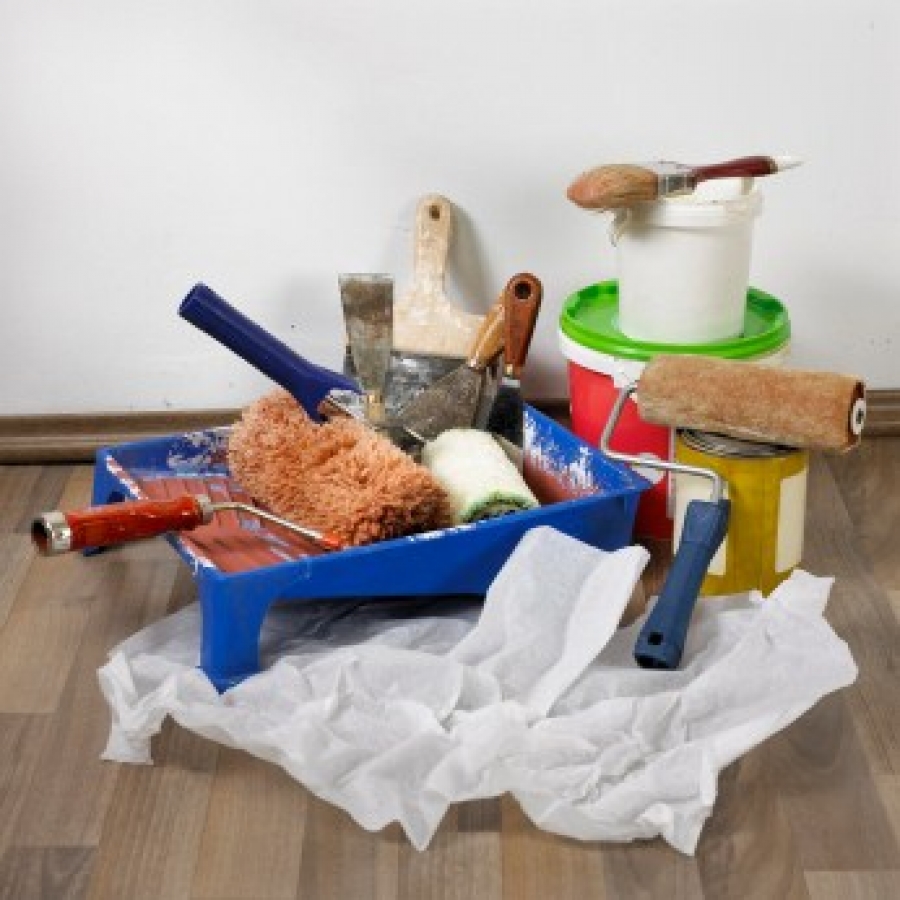
Basic Painter's Hand Tools
Whether I'm painting interior or exterior surfaces, I find that basic tools apply. The most basic tool is painter's pants. A wearable toolbox, they have pockets designed to carry all of the basics. The rear pockets hold my duster and sandpaper. The side leg pocket holds my knife, five-in-one, and a screwdriver with interchangeable bits. I reach into that pocket more than I can quantify; to reach somewhere else for these tools would cost me time. The loop on the opposite leg holds rags and can hold a hammer temporarily. (You might even be mistaken for a contractor and get a discount on your purchases.)
The five-in-one is a very important basic hand tool. As the name implies, it is a multipurpose tool. While it does not replace regular tools, I have used it as a scraper, chisel, screwdriver, nail set, and even a hammer. It will open and seal paint cans. The circular part can function as a squeegee for removing excess paint from roller covers. It truly is a vital tool, without which I am lost. As for a duster, an old paintbrush with the handle cut off makes a nice pocket-sized tool. A good painter will always have sandpaper at hand. I like to keep in my pocket at least one piece of each grit for the job at hand. Moreover, I have learned never to go up a ladder with only one piece of sandpaper. Having each of these tools at the ready is a real time-saver.

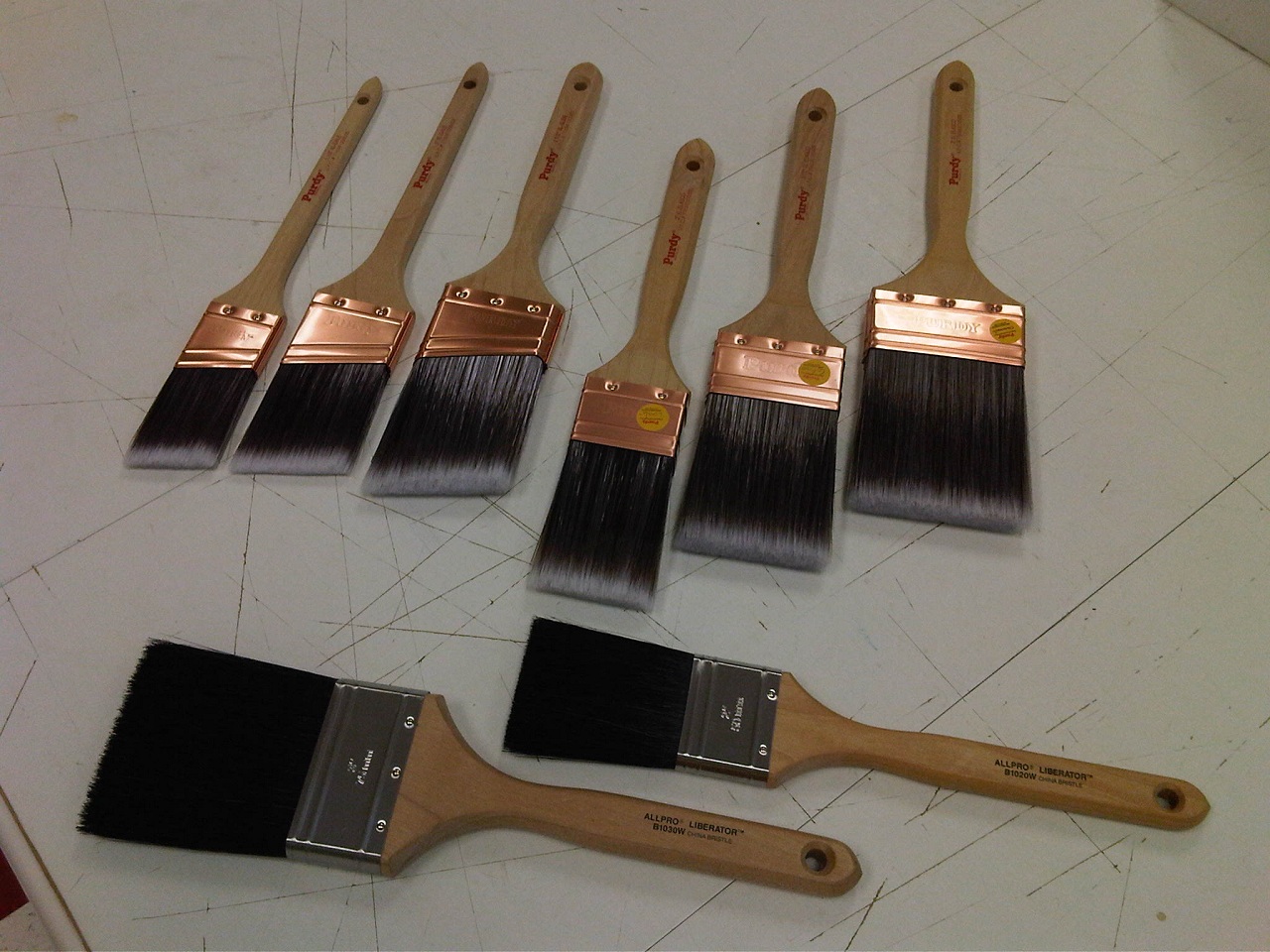
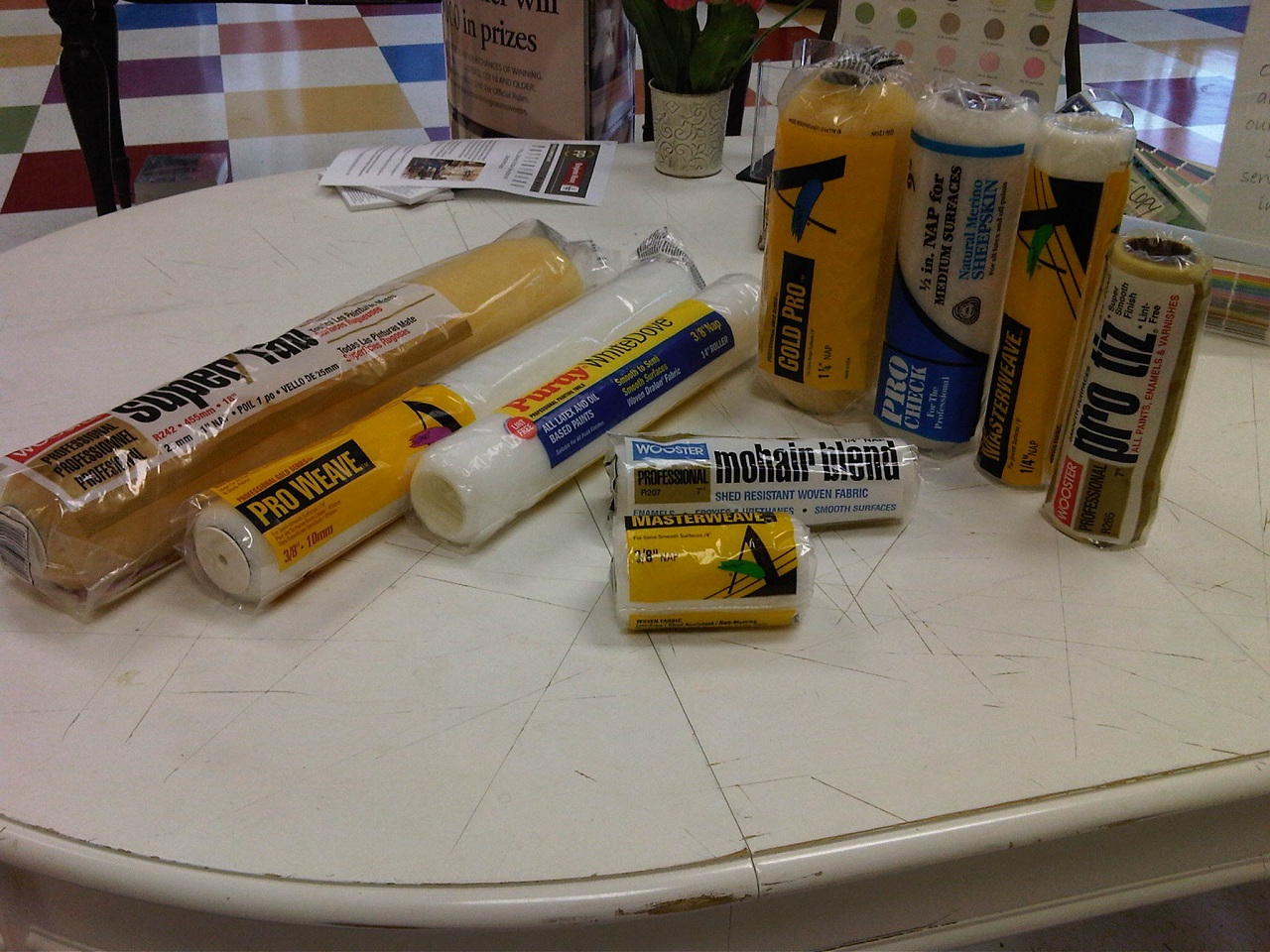
Another useful tool is a pothook. They hook your cut pot to your ladder as you work. You can also hook it through two belt loops and attach your cut pot to your waist, which frees up both hands. I have also used it to secure a chandelier that I had to lower to finish a ceiling, among other things. With a little imagination, a pothook can serve many purposes.
Basic Paint Application Tools
The methods of applying paint are brush, roll, and spray, which we will skip for this discussion. Choosing good tools is important here -- after painting knowledge and ability, the quality of your brushes and rollers determines the quality of your paint job and the time it takes to finish.
Paint Brushes
Although brushes are a somewhat complex subject, selection breaks down along three basic categories: the paint type, the surface type, and the size of the job. The first of these involves the type of bristle, natural or synthetic. Natural bristles, or animal hair, are exclusively for oil-based products. Using these in latex products will make the brush a good duster. (The cost of the time involved in restoration will exceed the cost of the brush). Synthetic bristles are for latex products, but they work effectively with oil products as well. The basic synthetic brush is nylon or a nylon/polyester blend. The polyester reinforces the nylon and prevents the softening that occurs when straight nylon encounters hot and humid environs, like exteriors. However, straight nylon is more abrasion-resistant and better suited to exterior surfaces, like stucco. This is one of many toss-ups you will encounter when choosing a brush.
The chosen brush should fit the painting surface. Brushes come in varying degrees of firmness, from soft to extra firm, which you can feel by running them across your open hand. When I am choosing a brush, I do that test with the surface and paint material in mind. The firmer brushes are better for painting coarse surfaces, like stucco and rough-hewn siding, and for cutting in walls and ceiling on interiors with flat paints. They are also good for priming raw wood because, as we discussed in a previous article, primers require brushing into the wood.
The softer bristle brushes are better suited for working with enamels (sheen paints) and for painting trim. They leave less of a brush mark and conform more easily when doing the precision work required when cutting lines and painting trim. I have switched brushes soon after starting a job because I neglected to determine the firmness of my brush. The wrong choice can make your work harder or effect your quality.
A paintbrush should also fit the scope of the job. Sizes range from pencil brushes to 6", and each has its specific application. Brushes also come in straight cut and angular cut, or sash brushes. Choosing the right size of brush is mostly common sense. However, with a few exceptions, a 2" or 3" brush is most common for interior walls and trim, with a 1" or 1-1/2" brush for sashes. The larger sizes are more appropriate for exterior work, where siding and larger trim complexes are common. Many times, a combination of brushes is called for on particular trim pieces, such as windows, baseboards, etc. If you find yourself too concerned about hitting surrounding surfaces, your brush is too big.
Roller Covers
Choosing a roller cover is a little more straightforward and involves less personal taste than choosing a brush. A cover consists of a synthetic core wrapped with a variety of fabrics (the nap). Nap materials range from foam to synthetic blends to wool, even to metal spikes for some industrial applications. Naps come in lengths that range from 1/4" to 1-3/4", with cover lengths ranging from 2" to 18". A 9" cover with a 3/8" nap is a 9" x 3/8" cover. My suggested lengths are approximations, and each depends on the manufacturer.
A basic rule of thumb is that the higher the sheen level of the paint, the smoother the surface being painted, and when using oil products, a shorter roller cover nap should be used. Longer roller cover naps are better suited to flat paints and rougher surfaces. Use a shorter nap cover for any product that is less viscous, like wood treatment products. Generally, I use a 9" x 1/2" nylon cover for flats and eggshells on drywall. However, on plaster I would switch to 9" x 3/8". The high paint build from a 9" x 1/2" cover may cause my finish to "curtain," or sag horizontally. The slightest of texture calls for a minimum of a 1/2" nap cover, regardless of sheen.
Use a cover length based on the scope of the project. An 18" cover works for floors, two-story great rooms, and ceilings that span multiple rooms, while a 7" cover works for rolling doors, shelves, or rooms with smaller, segmented wall sections. For everything else, a 9" cover is the standard for interior work. Wool covers hold a lot of paint (less reloading), and work nicely when a lot of surface area needs coverage, but an 18" cover is unnecessary. As with brushes, sometimes a combination of sizes is appropriate. For instance, a 9" cover generally accompanies an 18" cover. Remember, if a section of wall is only 8" wide, turn the roller and roll horizontally.
Roller covers not only apply material to large areas, they serve other purposes as well. Using a mohair cover to apply enamels to cabinets or other trim pieces can produce a uniform appearance similar to a factory finish. Specialty covers create decorative textures. Additionally, rollers can apply material that you lay off with a brush. However, do not get too far ahead of yourself -- the paint will begin to tack up and you will get drag marks.
Work smarter. Having this knowledge of the available tools and how to use them is invaluable in achieving better finishes in a shorter time.

Joe Sheridan
Joe Sheridan has been actively involved in the painting business, a generational trade in his family, for most of his adult life. He has worked most facets of the business, and currently runs a small paint contracting business, J.A. Sheridan Painting, in the Cape May, NJ/South Jersey area. He is now using his experience to benefit homeowners in their projects, and in their dealings with painting contractors.
Website: www.diypaintingguide.org/
